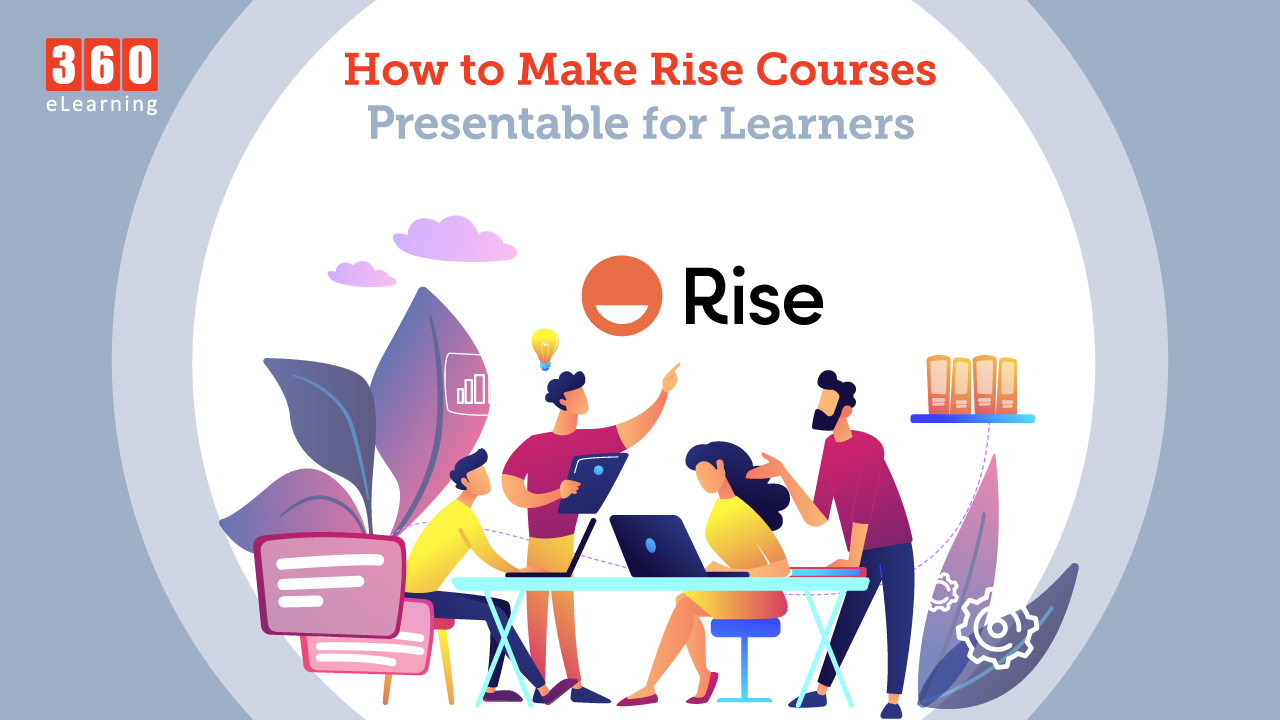Articulate Rise is a modern browser-based eLearning Authoring tool. It has a clean and minimal User interface & it is easy to use for not only experienced instructional designers and developers but also for those who are just starting in eLearning development. Articulate Rise360 has a wide variety of templates that designers can choose from to create custom eLearning courses.
Rise360 provides developers with plenty of block templates to create eLearning courses. And that makes it a lot easier to create courses. But there can only be so much customization we can make in those templates. There’s not much customization we can do to change these block templates.
If there’s not much customization available, how can we make our Rise courses stand out? Below are some tips to create engaging Rise modules for learners.
Create a design template:
Defining custom colors and style for icons, images, and text style is an essential step before starting developing any module. Having a consistent design language will make our course appealing.
Define the design layout before starting:
If we want to start on a series of modules for a specific course, it is better to create a layout before designing images and graphics. This will be really helpful later on as it will allow us as designers to already have an overview for creating each part of the module with unambiguous and clear direction.
Create engaging images and banners:
Use thoughtfully designed banners and images. There are limited ways for embedding images into a Rise360 course. But we have full creative freedom to create the best-looking banners or images for our course. While there are limited ways to display text in a course, we can give it an extra sparkle with specifically curated images.
Labeled graphics with hotspots:
Rise360 has a neat interactive feature that enables learners to view more information in form of text elements while hovering over a pointer. This feature is particularly useful when we want to display selective information at a time instead of putting a bunch of text all at once. For example, to show different working components of an engine, we can insert a Hotspot Label block template. Then we can place multiple hotspots on each engine part we have content for. Clicking on each hotspot will show content for only that significant part.
Create custom templates:
Rise allows creators to create their own block templates. If we have multiple modules from the same course, we probably need to use a lot of identical designs and themes. Rise360 has made it easier to reuse designs by creating block templates and importing them into any course we are developing with ease.
After considering all these actions, we should have a specialized and good-looking Rise module. The last step should be to test all content and publish it. We can send a review link to the client where they can share their feedback with us. Or we can share an offline version.


